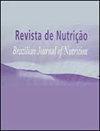从一个岛屿的角度看地中海饮食金字塔的改造
IF 0.5
4区 医学
Q4 NUTRITION & DIETETICS
Revista De Nutricao-brazilian Journal of Nutrition
Pub Date : 2022-01-01
DOI:10.1590/1678-9865202235e220025
引用次数: 1
摘要
【摘要】目的本研究旨在确定塞浦路斯传统和当地的食物消费和对地中海饮食的坚持。同时,旨在提高他们对地中海饮食以及传统和当地食物消费的依从性。从这一点出发,本研究旨在修订塞浦路斯地中海饮食金字塔,以当前地中海饮食金字塔为基础。方法采用最小样本量386例,置信区间为95.0%,误差为5.0%。该研究于2020年11月至2021年4月在塞浦路斯在线进行。所有志愿者都是在国家公共互联网平台上被邀请参加这项研究的。参与者对地中海饮食的依从性通过地中海饮食依从性筛查来确定。通过食物频率问卷确定传统和当地食物消费频率。一个新颖的塞浦路斯地中海饮食金字塔与塞浦路斯的传统和当地的食物项目开发。这种改变也是为了保护地球的健康,增加传统食物的消费,坚持地中海饮食。结果1007名成年人(78.0%为土著岛民/塞浦路斯人)自愿参与了本研究。地中海饮食依从性筛查的平均得分为7.55±2.30分,只有34.4%的人高度坚持地中海饮食。根据他们的回答,有必要增加橄榄油、蔬菜、水果、鱼和红酒的消费量,减少红肉和甜点的消费量。根据对地中海饮食依从性筛选者的答复及其传统/当地食物消费频率,绘制了最新的塞浦路斯地中海饮食金字塔,从而绘制了塞浦路斯的国家食物金字塔。人们通常食用的传统食物和当地食物被添加到金字塔中,以促进普通人群对地中海饮食的适应。适当消费的食物被加入,使其更具区域特异性,很少消费的食物被加入,以帮助增加消费。结论这一改变被认为有助于提高地中海饮食适应性,传统/当地食物消费,减少营养对地球健康的影响。同时,这种改变也可以为其他传统食物金字塔的发展提供启示。本文章由计算机程序翻译,如有差异,请以英文原文为准。
Modification of Mediterranean Diet Pyramid from an Island’s perspective
ABSTRACT Objective The present study aimed to determine traditional and local food consumption and adherence to the Mediterranean diet in Cyprus. And also, aimed to improve their adherence to the Mediterranean diet and traditional and local food consumption. From this point, this current study aimed to revise the Cyprus Mediterranean Diet Pyramid, based on the Current Mediterranean Diet Pyramid. Methods The sample size was calculated as a minimum of 386 according to a 95.0% confidence interval, and a 5.0% error. This study was conducted online between November 2020-April 2021 in Cyprus. All volunteers were invited to this study on the national public internet platforms. Participant´s adherence to the Mediterranean diet was determined by the Mediterranean Diet Adherence Screener. Traditional and local food consumption frequencies were determined by a Food Frequency Questionnaire. A novel Cyprus Mediterranean Diet Pyramid was developed with traditional and local food items for Cyprus. The modification was also aimed to safeguard planet health, to increase traditional food consumption and adherence to the Mediterranean diet. Results 1,007 adults (78.0% native islanders/Cypriots) participated voluntarily in the current study. The mean Mediterranean Diet Adherence Screener score was 7.55±2.30 points and only 34.4% had high adherence to the Mediterranean diet. According to their responses, there was a need to increase use of olive oil, vegetables, fruits, fish, and red wine consumption and to decrease red meat and dessert consumption. According to responses to the Mediterranean Diet Adherence Screener and their traditional/local food consumption frequencies an up-to-date Cyprus Mediterranean Diet Pyramid was done hence a national food pyramid for Cyprus. Commonly consumed traditional and local foods were added to the pyramid to facilitate increased adaptation of the Mediterranean diet in the general population. Adequately consumed foods were added to make it more region-specific and rarely consumed foods were added to help to increase consumption. Conclusion This modification is believed to be instrumental to increase Mediterranean diet adaptation, traditional/local food consumption and decrease the impact of nutrition on the planet´s health. And also, this modification can shed light on the development of the other traditional food pyramids.
求助全文
通过发布文献求助,成功后即可免费获取论文全文。
去求助
来源期刊
CiteScore
1.20
自引率
12.50%
发文量
24
审稿时长
6-12 weeks
期刊介绍:
Revista de Nutrição is former Revista de Nutrição da Puccamp, founded in 1988. It is a bimonthly publication every four months and it is of responsibility of the Centro de Ciências da Vida, da Pontifícia Universidade Católica de Campinas . It publishes articles that contribute to the study of Nutrition in its many sub-areas and interfaces; and is open to contributions of the national and international scientific communities.

 求助内容:
求助内容: 应助结果提醒方式:
应助结果提醒方式:


